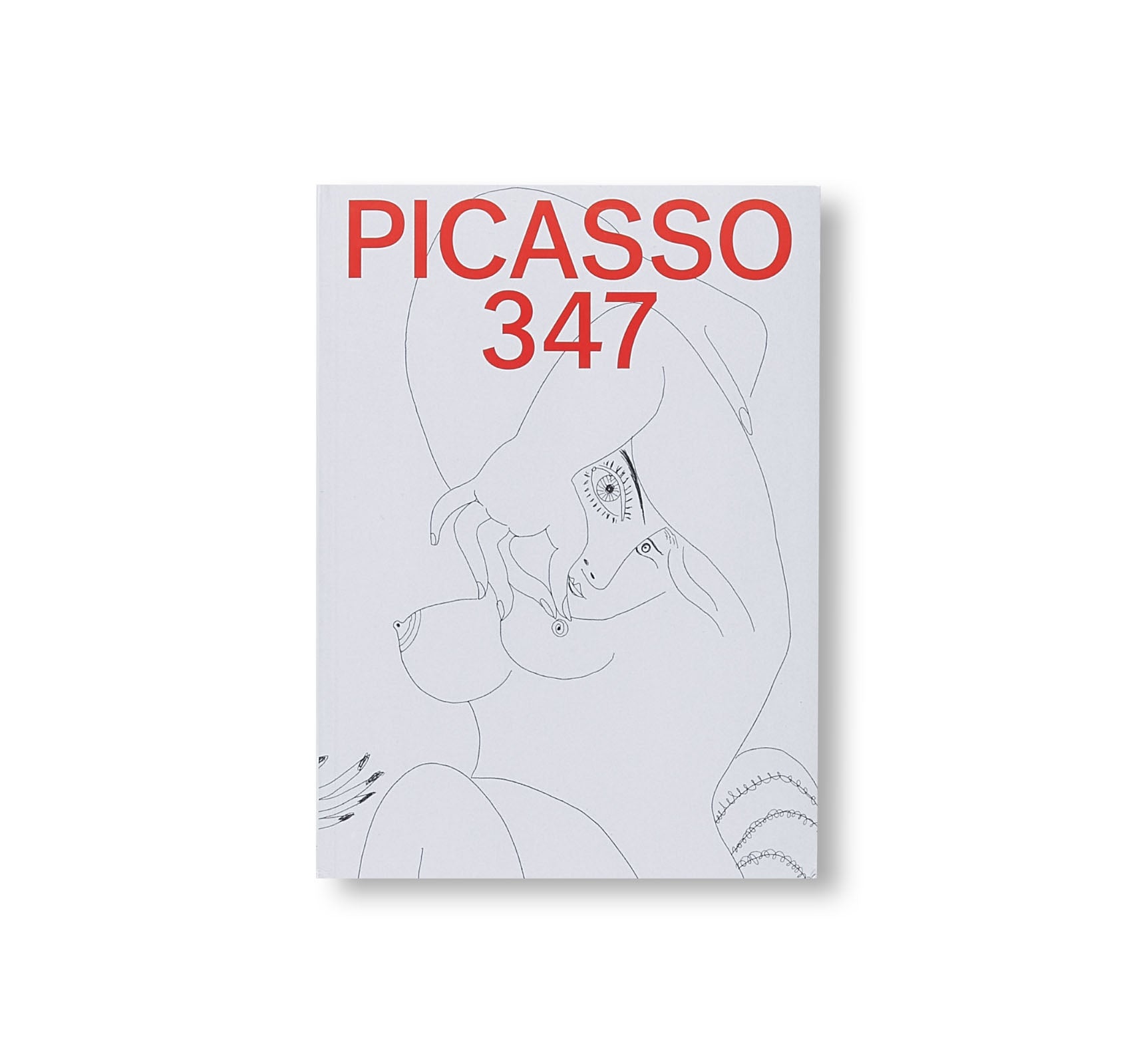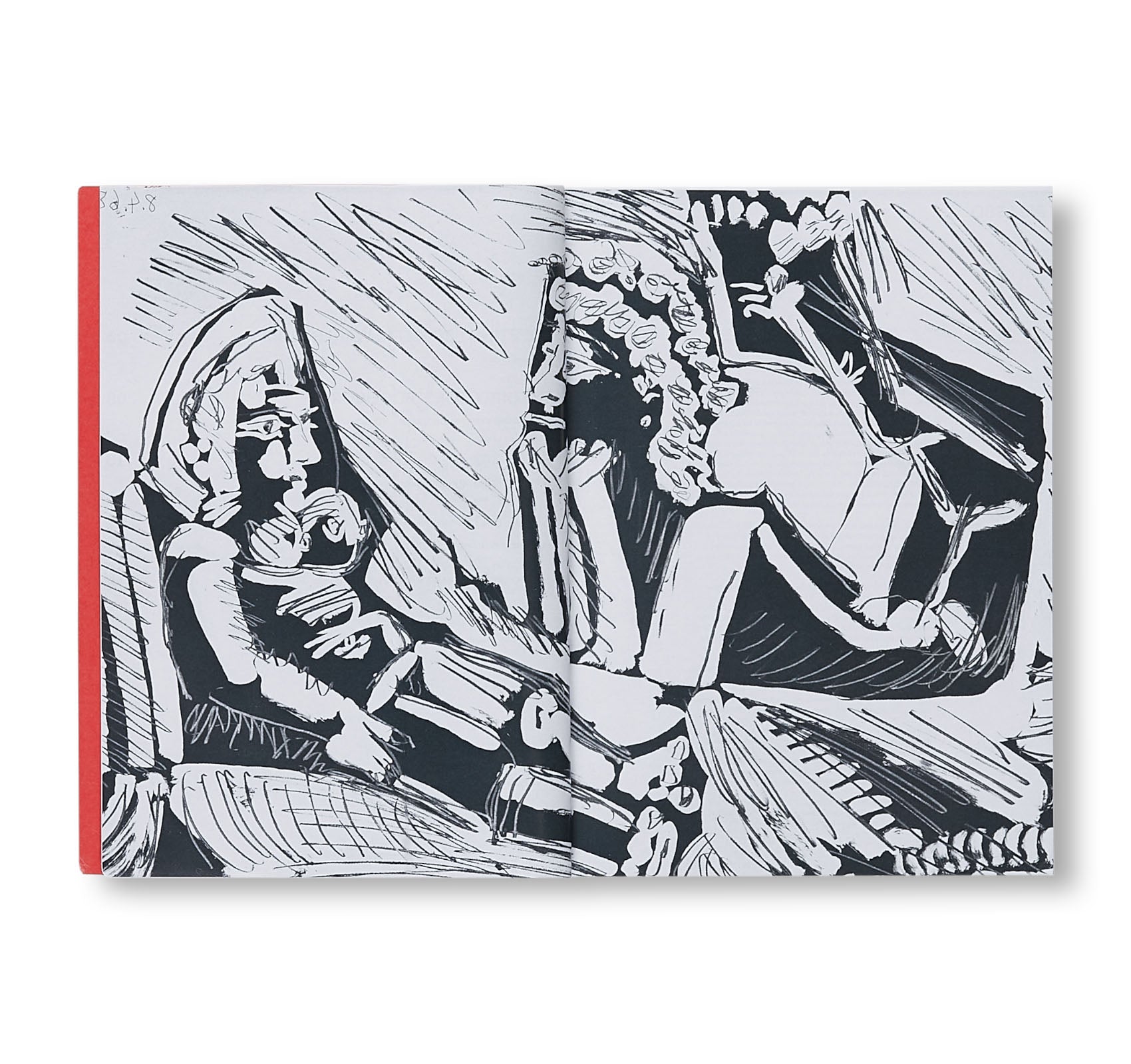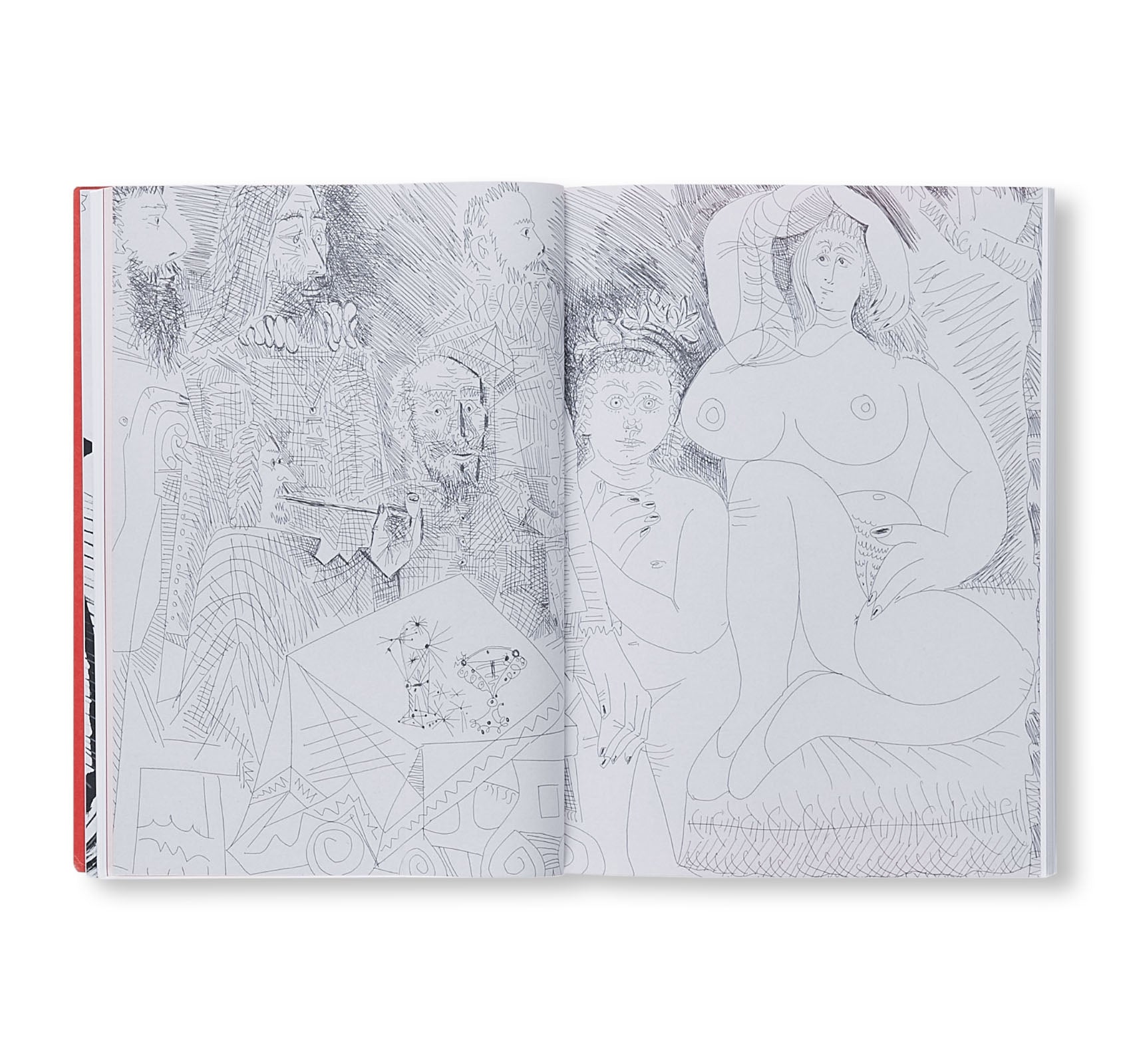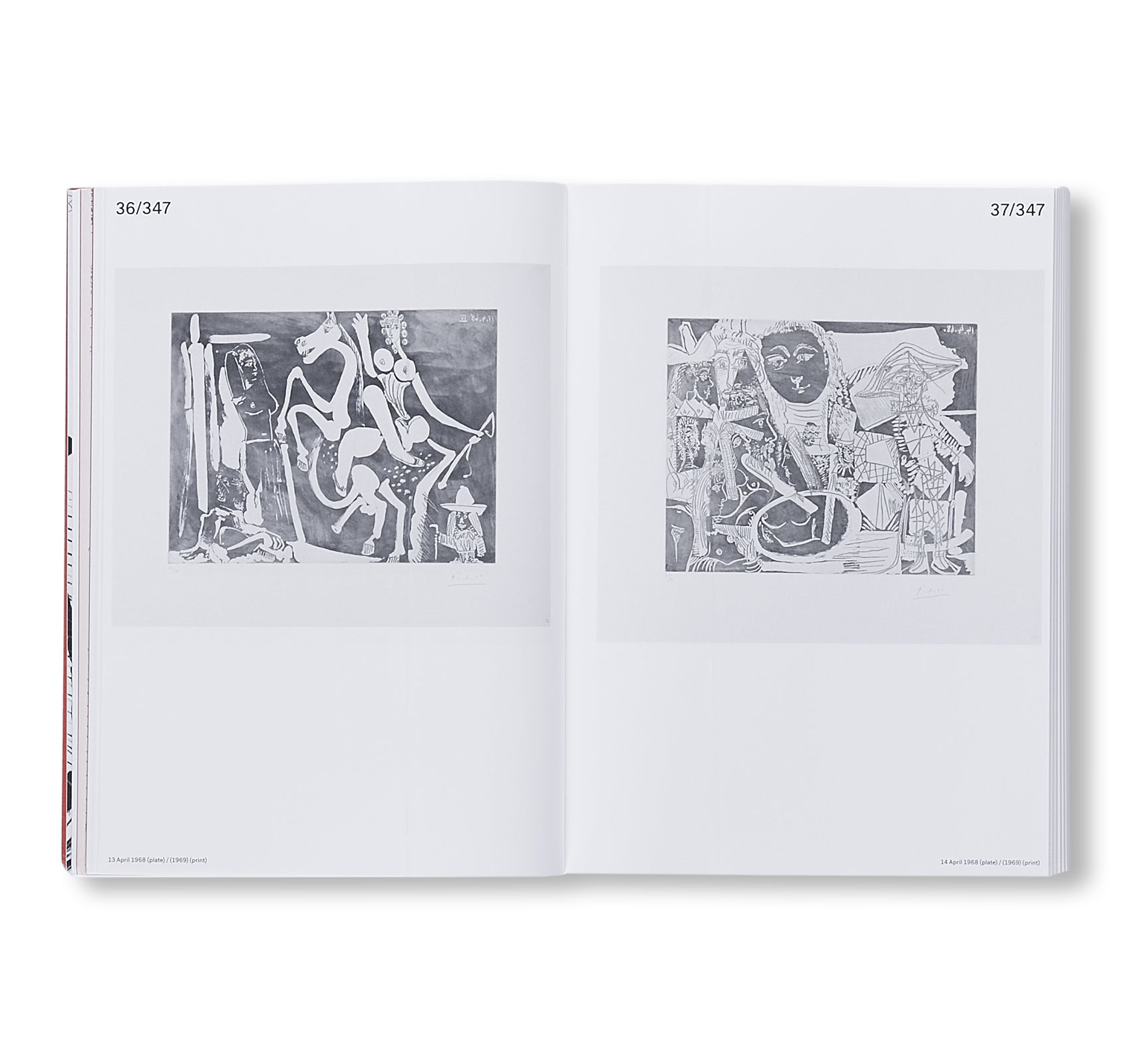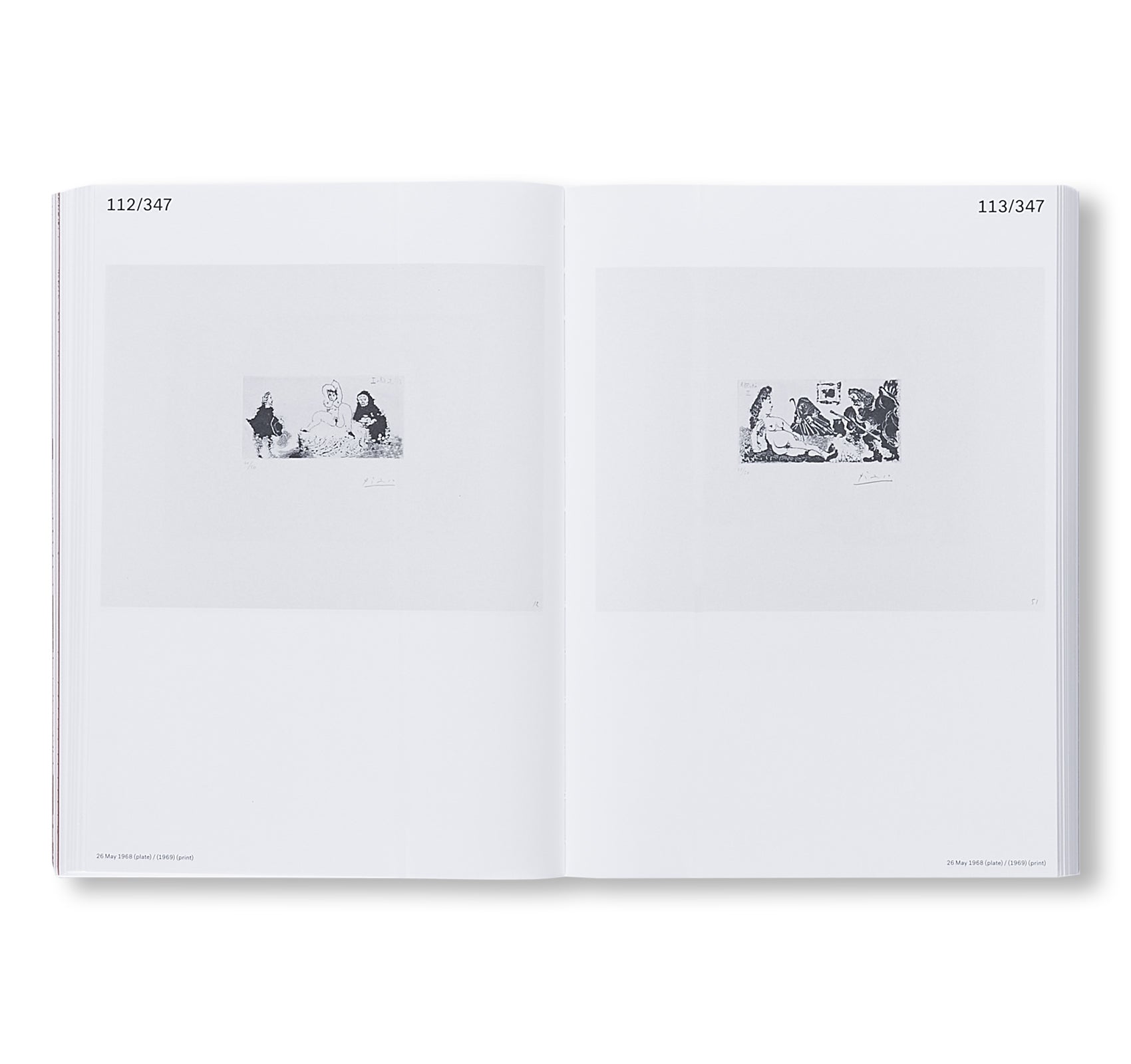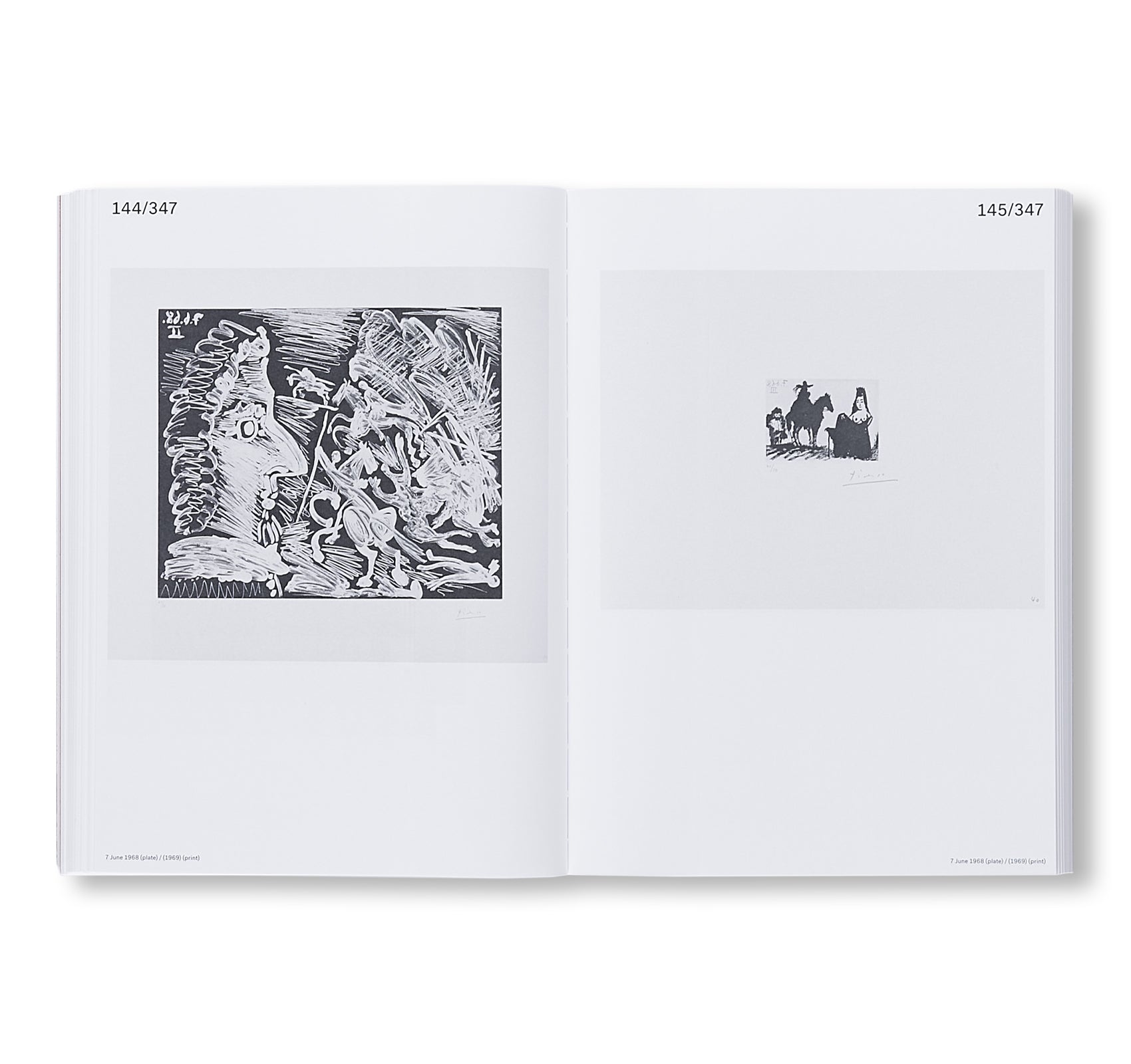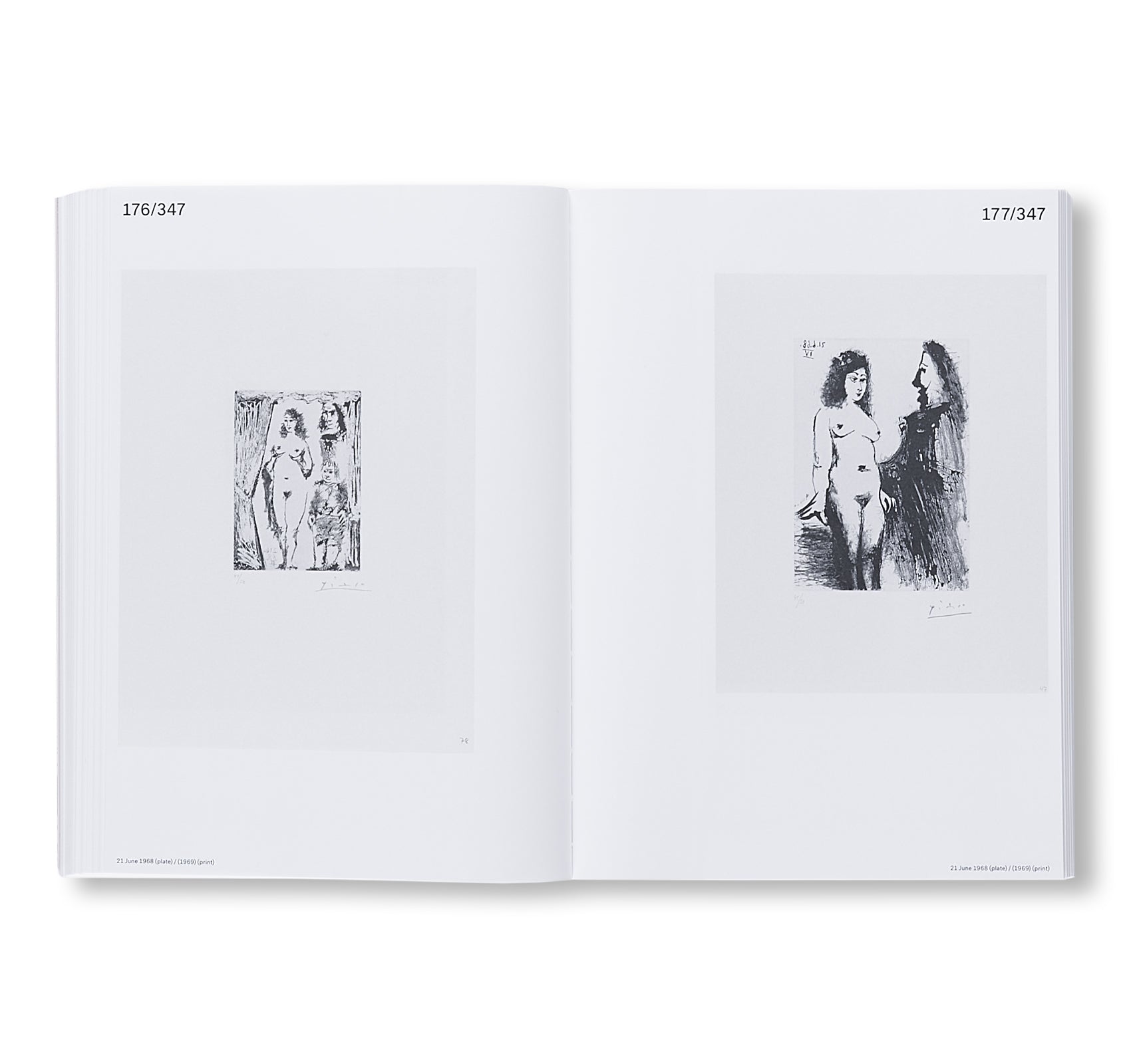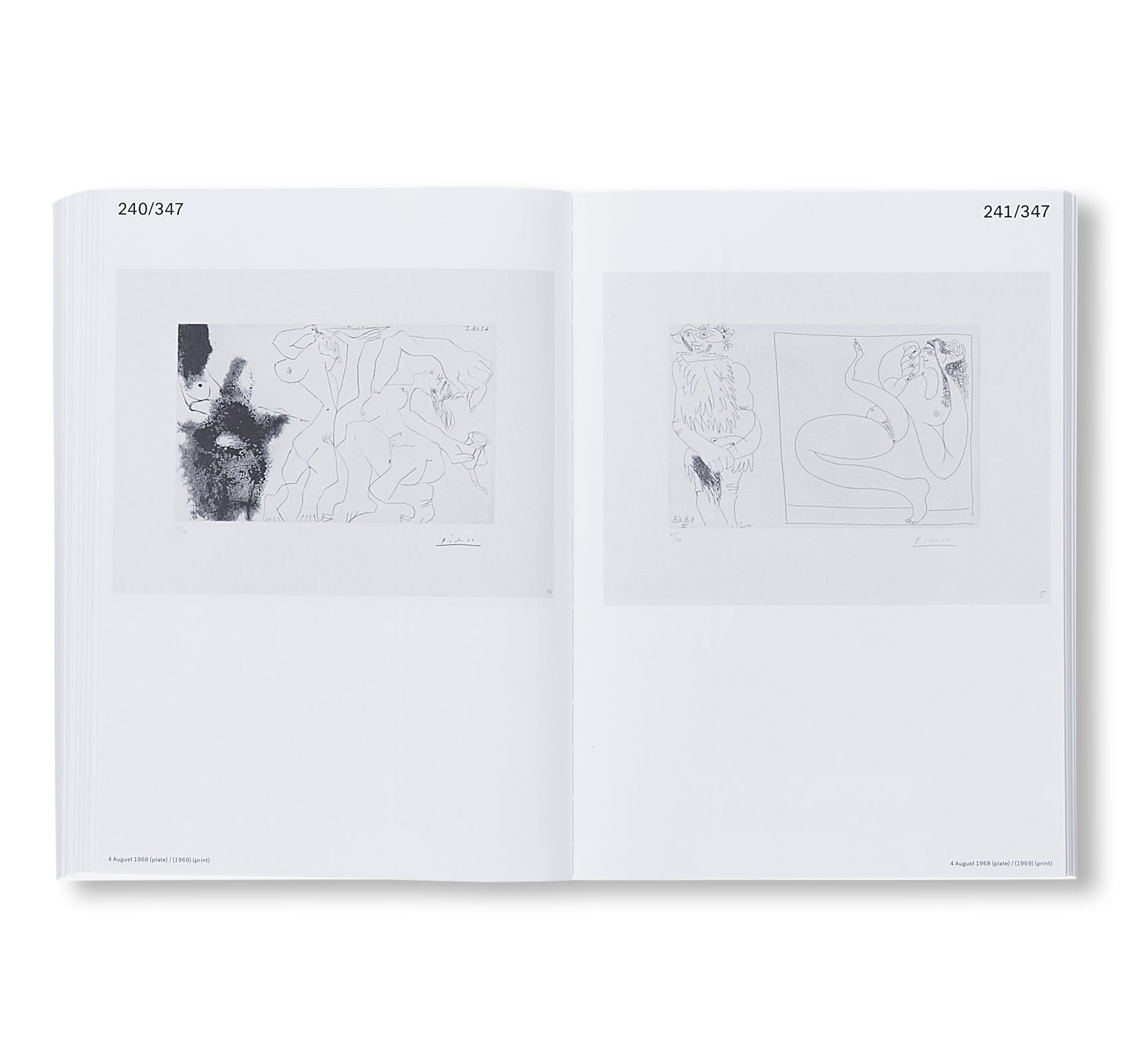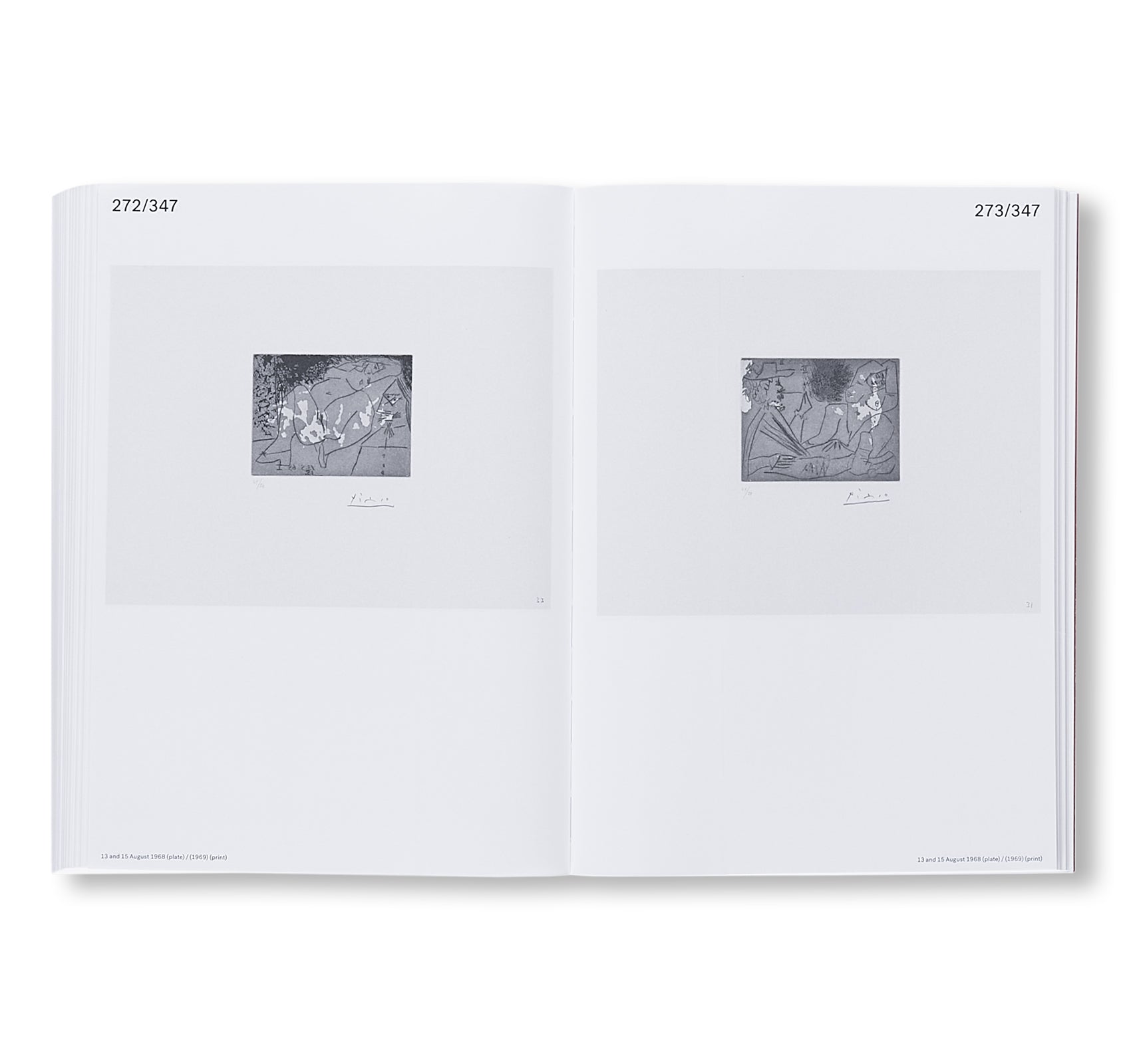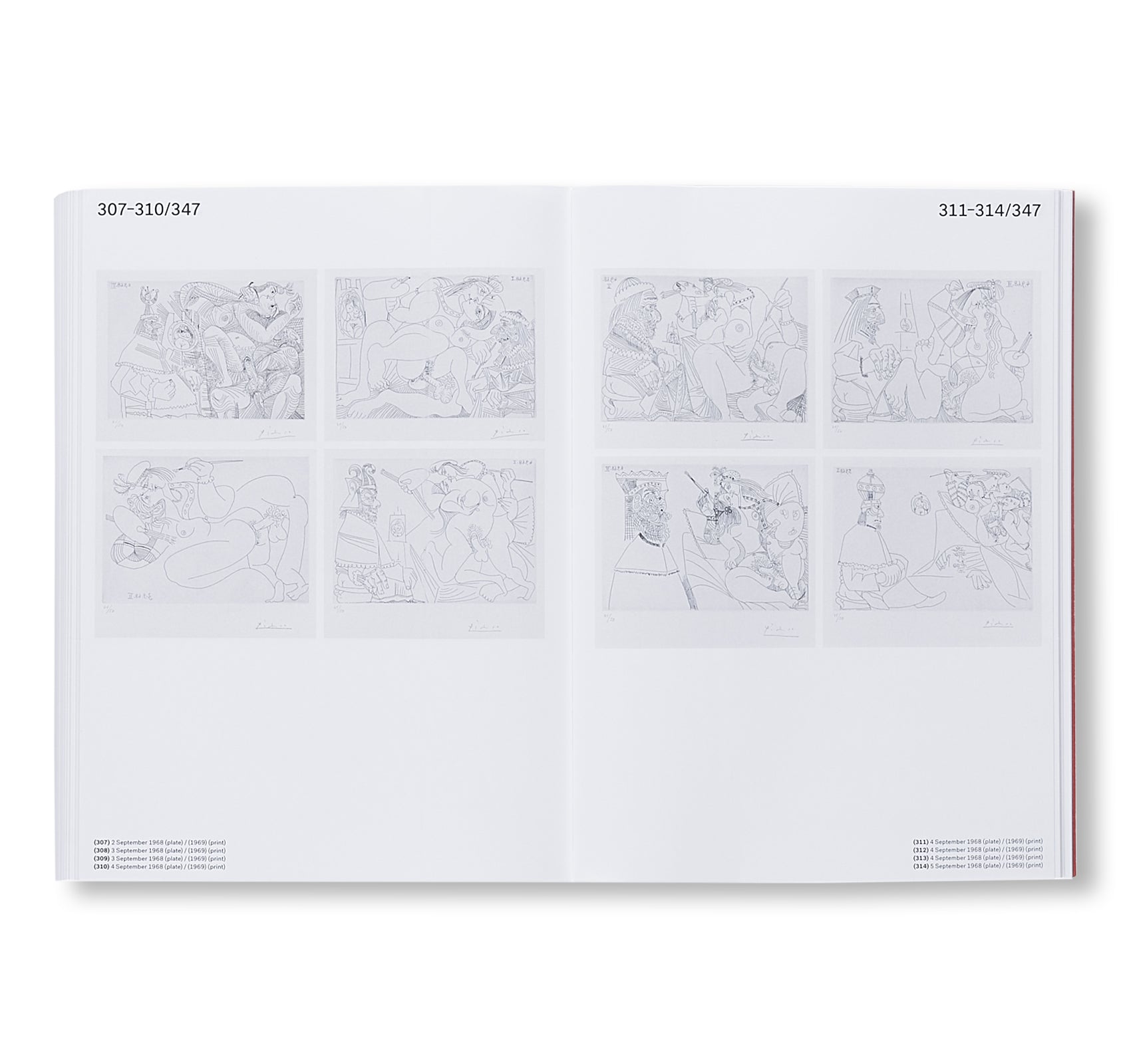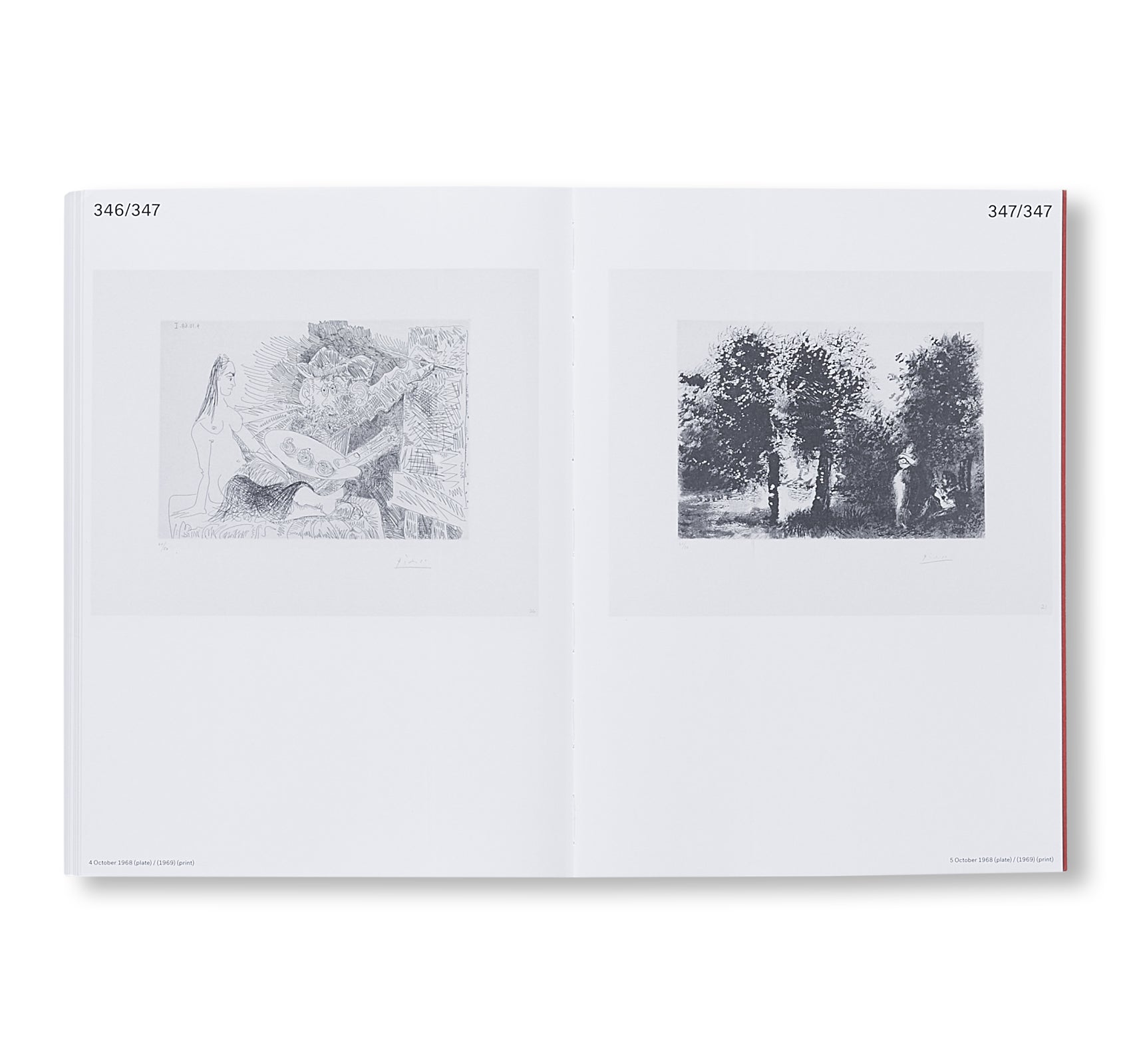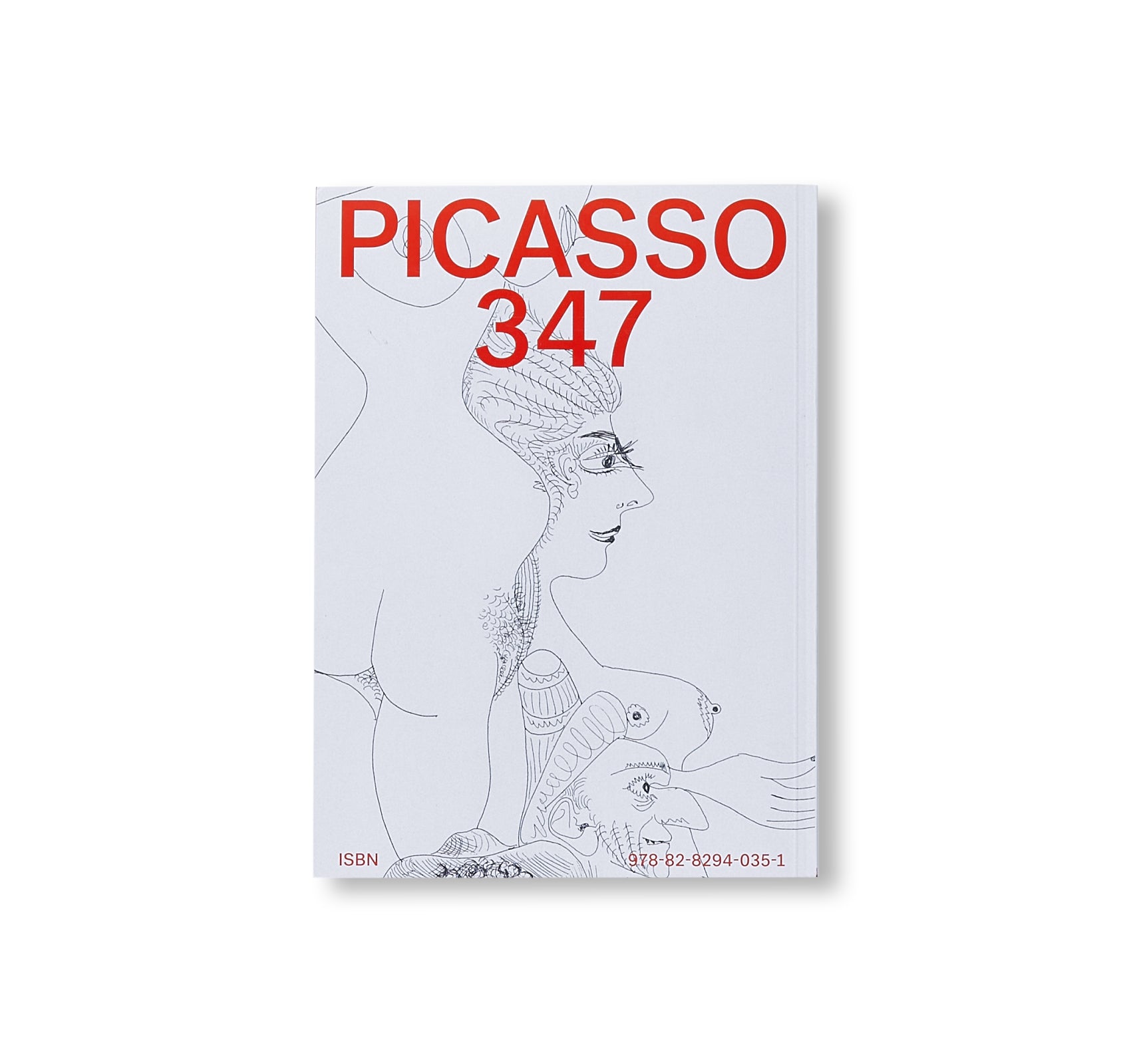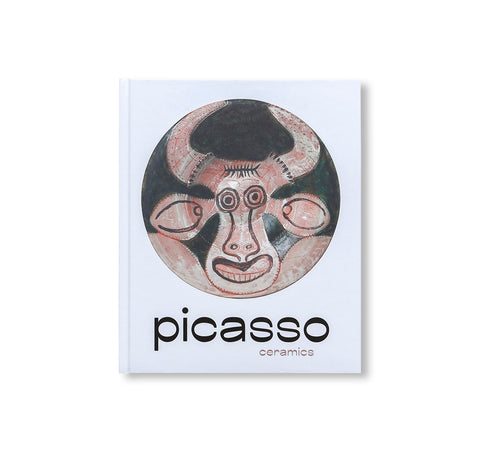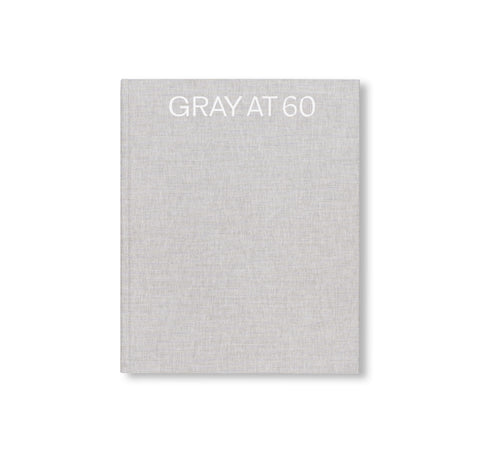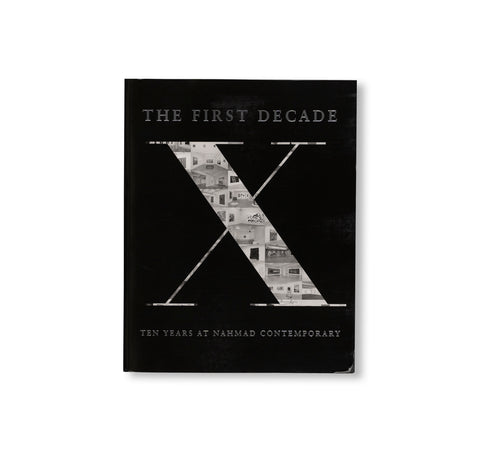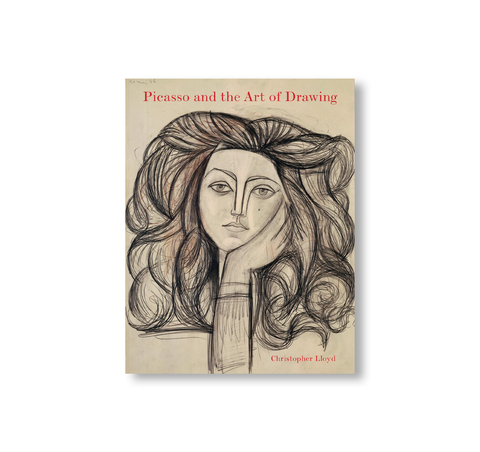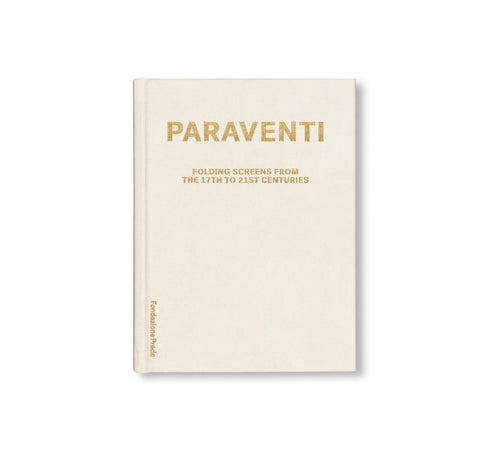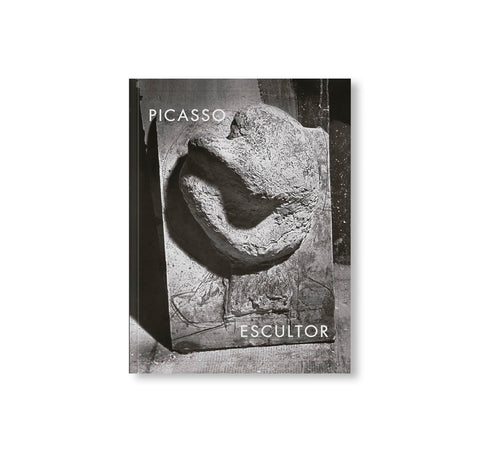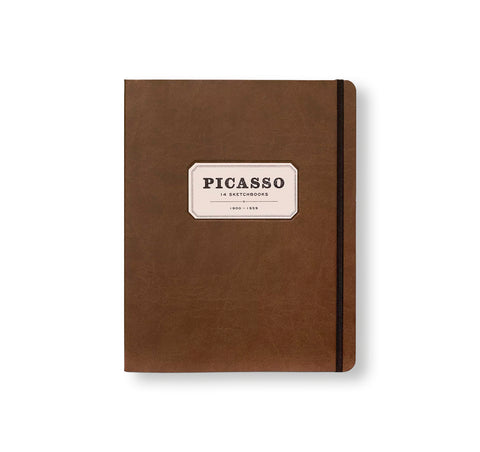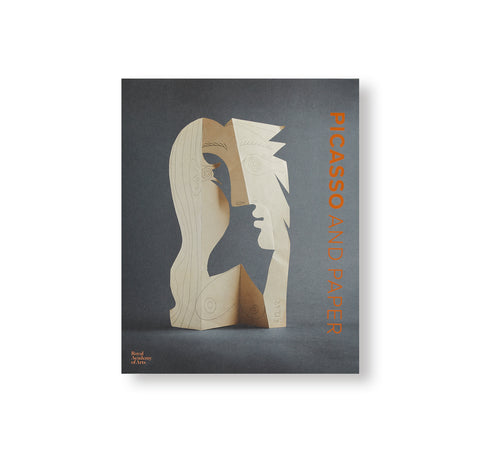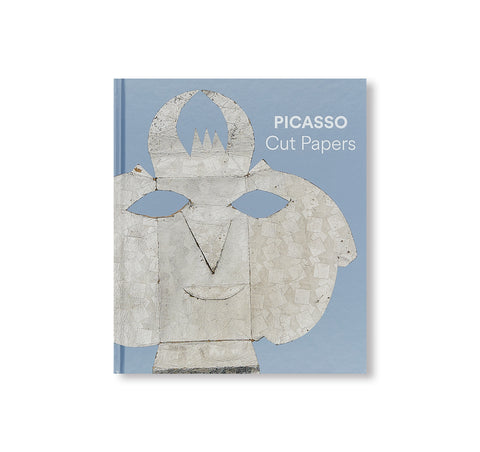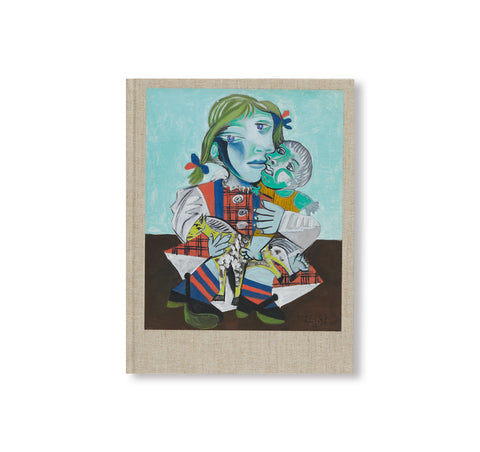PICASSO 347 by Pablo Picasso
スペイン人アーティストであり、近代美術史上欠くことのできない人物であるパブロ・ピカソ(Pablo Picasso)の作品集。7ヶ月足らずという凄まじい速さで完成された、晩年の連作銅版画「347シリーズ」。87歳を迎えた1968年3月16日から10月5日までの200日間に347点の作品を生み出した。ありとあらゆる銅版画のテクニックを駆使して制作された重要かつユニークなこのシリーズは、グラフィックアートの歴史において中心的な役割を果たしており、かつ様々な意味で自身の人生と芸術を描き出した作品でもある。人生を静観しているような年老いた作者のセルフポートレイトには、ちょっとしたユーモアと深い悲しみを感じられるものが多い。このシリーズにもまた作者の比類なきクリエイティビティが溢れ出ている。特定・不特定の女性への愛を表現した作品であっても、そこには常に芸術の歴史、芸術の創造、芸術についての思索が言及されている。その意味では、作者の作品はモチーフを越えて芸術そのものをテーマにしているともいえる。「347シリーズ」には一貫したテーマやモチーフはない。作者の作品の多くがそうであるように、これらの版画は極めて自伝的であり、全体として自身の人生と作品の振り返りにもなっている。一見すると、技法、サイズ、表現もてんでんばらばらの不協和音のようでもあるが、注意して見ているうちにいくつかのモチーフが際立ってきて、全体の中に大小のシリーズが形成されていることに気が付く。作品はほぼ年代順に並べられており、ピカソ自身がそれぞれの作品に番号をつけている。タイトルがついているものは1つもない。細心の注意を払って制作されたアクアチントやメゾチントから最もシンプルな線画までバラエティ豊かな作品を見ることができる。シリーズ最初の20点は、この作品のすべてのパフォーマーが文字通り登場する序章になっている。サーカスやピエロの生活を捉えた場面には、年齢も衣装も様々な作者自身が顔を出しているものも多い。このシリーズの他の部分と同様に、作者とそのモデルのモチーフが最も目を引く。モデルは常に若く美しく、作者はしばしば道化として描かれている。
Suite 347 was executed by Pablo Picasso at high speed in period of less than seven months; 347 works were completed in 200 days, from 16th March to 5th October 1968, when the artist entered his 87th year. A major effort and a unique series using all the copper graphic’s different techniques. Suite 347 plays a central role in the history of graphic art. In many ways it’s Picasso’s own life and art that he presents in Suite 347. In many of the prints we find self-portraits, where he as an old man is filled with sadness contemplating life, often with a dose of humour, and the whole series exposes a creativity beyond comparison. Picasso shows his love to the woman, to women, but never without at the same time referring to the history of art, to the creation of art and to the contemplation of art. In this way the work is about more than the motif, it is about art itself. Suite 347 is not a coherent series by either theme or motif. As with most of Picasso’s works these prints are acutely self-biographical and they collectively display a retrospective view of his life and work. At first sight, the suite seems like a cacophony of techniques, dimensions and expressions, yet upon closer inspection, certain motifs stand out and constitute smaller and larger series within the whole. The works are mounted almost chronologically, with each work numbered in Picasso’s own order; he never gave the works titles. Here we find everything from the most painstakingly worked aquatints and mezzotints, to the simplest line engravings. The first 20 prints in Suite 347 constitute an overture in which of all the forthcoming performers literally make their entrance: scenes from circus and clown life, often with the artist present, rendered in a variety of costumes and ages. Most dominant, as in the rest of the series, is the motif of the artist and his model. The model always young and beautiful, while the artist is often presented in the role of the clown.
